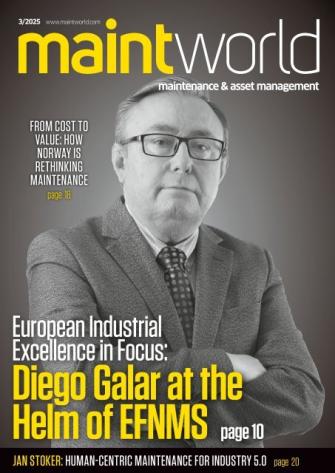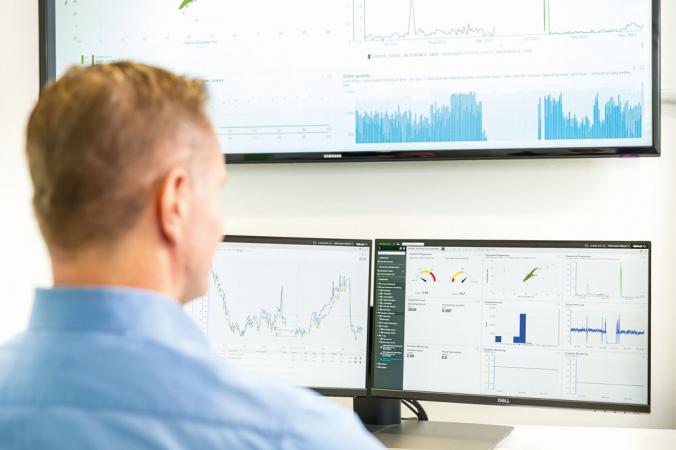An Immersive Environment for Visual Operations – Towards Better Asset Performance
Connecting IT with Operational and Engineering Technology will bring real benefits to Asset Performance Modelling. Digital engineering modelling will help to generate a 3D reality mesh for the real world data.
It is helpful to think of digital engineering information as the digital DNA for infrastructure assets – down to every nut, bolt and screw. Just as doctors can analyse human DNA to anticipate health issues and personalize healthcare for better health outcomes, companies can harness the digital DNA of their assets to personalize asset maintenance for better TOTEX, maximized uptime and more.
As operations technology (OT) leverages the Industrial Internet of Things (IIoT) with sensors on operating equipment and assets producing an enormous volume of big data, there is a need for improved security, information sharing and data management. This, in turn, is driving an unprecedented convergence with IT. However, organizations are struggling to make use of the data from their OT and IT systems, causing them to miss opportunities to improve asset performance. This is due, in part, to the fact that the digital engineering model developed during the engineering phase of capital projects, are typically not playing a role in operations.
What if owner-operators could use these models in operations? Imagine how a digital engineering model − the engineering technology or ET of an asset − could help operations and maintenance people forecast problems, do better planning, and improve performance. It is now possible for companies to converge their IT, OT and ET – and seamlessly integrate process and information flows between them – to enable asset performance modelling to deliver actionable intelligence for decision support through an immersive environment for visual operations.
The Digital Engineering Model
For many years, engineering departments have been using advanced modelling and simulation applications that focus on the process of design and construction of an infrastructure asset – a plant, bridge, highway, railway or utility network – in a way that improves project delivery and asset performance. Better project delivery enables companies to optimize CAPEX – through both the depth of information modelling and the breadth of information mobility for collaboration during design and construction.
There’s a staggering amount of information related to assets – detailed component specifications, precise geo-location, configuration management, fabrication details, cost information, predicted lifetimes, recommended maintenance and repair information. Today’s engineering technology makes it possible to bring all of this information together within the federated digital engineering model, making it possible to track, access, and share with others collaborating on the project (see Figure 1 below).
The technology also enables engineers to model projects in a 3D virtual setting for design integration and construction work packaging, so that when the project is actually constructed in the real world, the project teams and stakeholders are able to minimize unforeseen situations and keep the project on track.
Ideally, all of this information flows between applications and project teams for better project delivery, which is the key to better CAPEX, and flows through to operations and maintenance systems across the entire asset lifecycle, which is key to reducing OPEX. For example, when companies can integrate the 3D models for each discipline involved in a project, it improves information mobility.
Disciplines can more effectively communicate critical design details for operations, detect clashes earlier in the design phase and before construction starts, share updates during the engineering and construction phases, and hand over accurate and complete information to ensure successful start-up and ongoing operations.
The Beginning of IT/ET/OT Convergence
The Industrial Internet of Things (IIoT) is driving a convergence between operational technology and information technology. Digital engineering models can accelerate this convergence and add the visual representation of the real world needed to aid decision making; this can have far-reaching impacts on the safety, productivity, efficiency and operations of industries worldwide.
For example, consider how South Australia Water is currently using predictive and real-time operational analytics to forecast water demand and improve customer service while reducing operational costs. To create a demand forecasting tool, they needed to pull information from both the operational and IT sides of the organization in real time.
Bentley’s predictive analytics software was chosen as the operational intelligence platform due to its real-time ability to connect and capture data from a wide variety of sources, its ability to perform complicated calculations and analysis, and its impressive visualization capabilities. Real-time monitored sensor data is brought in from the reservoirs, water treatment plants, valves, flowmeters, and pumps spread across the extensive pipeline network.
This operational data is combined in real time with climate, energy, cost, and population data and is displayed on dashboards. Bringing these data sources together has resulted in huge benefits, including improved performance, enhanced understanding of interrelationships, and better decision-making and more accurate predictions of short- and long-term demand.
South Australia Water also integrated a demand optimization tool that is used to optimize the availability and the movement of clean water around the network to demand areas quickly and efficiently. It calculates how to deliver the water by calculating costs and determining which pumping stations to use, which pumps are needed, and so on.
Built-in analytics take the output of the demand forecasting tool to develop a live hydraulic model that determines water pressures and flows throughout the network. Using this digital engineering model, South Australia Water can actively optimize water supply and reliability to its customers. Customers enjoy improved water security, and response times to problems, such as broken water mains, have been reduced by 90 percent.
Tying together IT, OT, and ET also allows the company to take advantage of lower forward market pricing for electricity. They can use an energy portfolio management spot-market power price tool to determine the optimal timing for pump operations on five pipelines, as well as when to purchase power in highly volatile markets. The impact on OPEX can be significant – a saving of AUD 3 million per year.
The second part of the article will be released in issue 4/2016 covering Asset Performance Modelling and the Integration of Processes and Information.








![EMR_AMS-Asset-Monitor-banner_300x600_MW[62]OCT EMR_AMS-Asset-Monitor-banner_300x600_MW[62]OCT](/var/ezwebin_site/storage/images/media/images/emr_ams-asset-monitor-banner_300x600_mw-62-oct/79406-1-eng-GB/EMR_AMS-Asset-Monitor-banner_300x600_MW-62-OCT.png)



